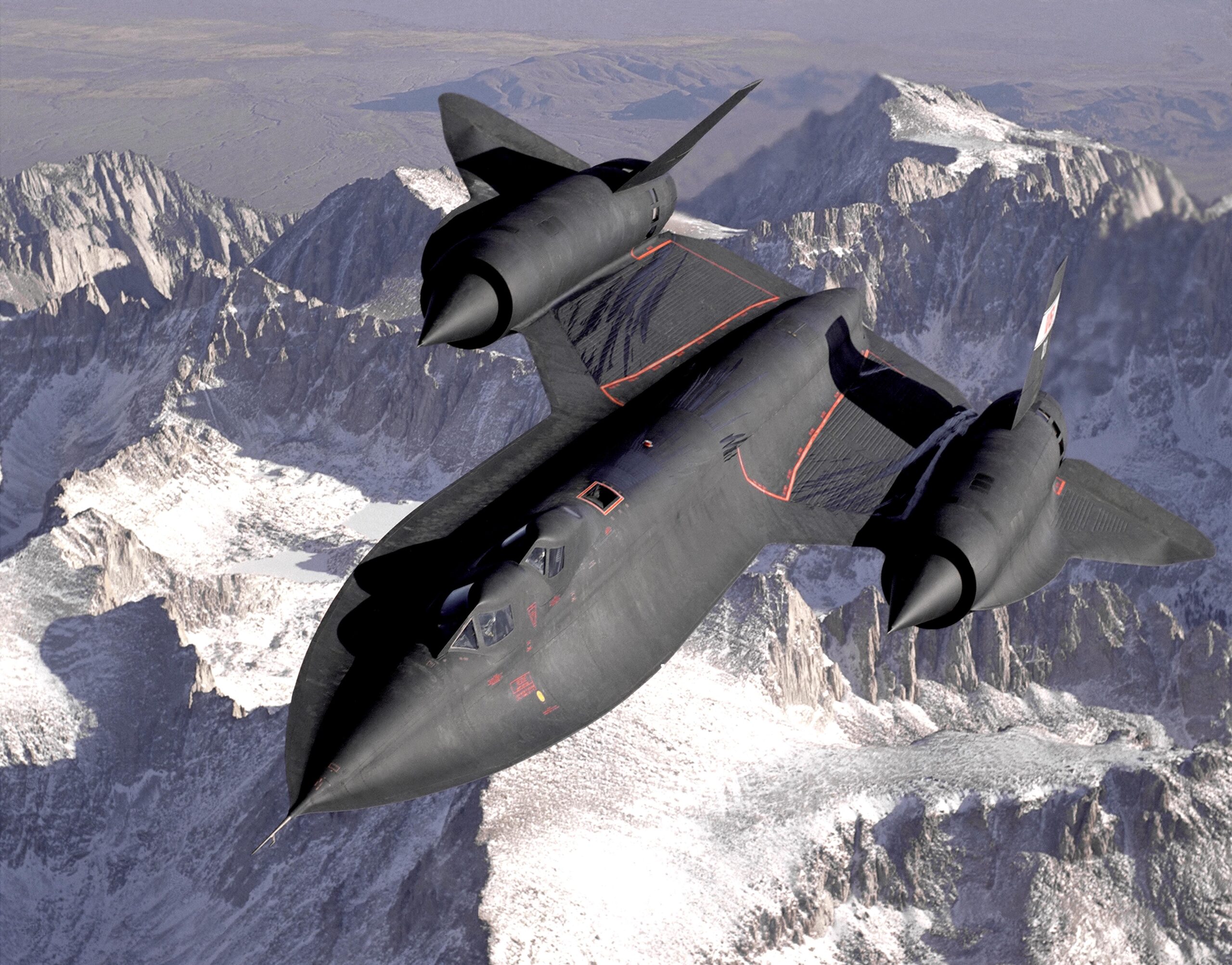The Lockheed SR-71 Blackbird stands as one of the most extraordinary aircraft ever built, renowned for its unparalleled speed, altitude capabilities, and distinctive design. Developed by Lockheed’s Skunk Works division under the leadership of Clarence “Kelly” Johnson, the SR-71 was a response to the increasing need for high-speed, high-altitude reconnaissance during the Cold War. Its operational history, technological innovations, and lasting legacy make the SR-71 a remarkable achievement in aviation history.
Design and Development
The origins of the SR-71 can be traced back to the U-2 reconnaissance aircraft, which, despite its success, became vulnerable to surface-to-air missiles (SAMs). The need for a more advanced reconnaissance aircraft led to the development of the A-12, which eventually evolved into the SR-71 Blackbird. The SR-71 first flew on December 22, 1964, and was officially introduced into service in January 1966.
Stealth and Aerodynamics
One of the key innovations of the SR-71 was its emphasis on reducing radar cross-section, a precursor to modern stealth technology. The aircraft’s unique shape, including its chines (sharp edges running along the sides of the fuselage), helped to deflect radar waves. Additionally, the extensive use of titanium in its construction not only reduced its radar signature but also allowed it to withstand the extreme temperatures generated by high-speed flight.
The SR-71’s design was highly aerodynamic, with a long, slender fuselage and a delta wing configuration. This design minimized drag and enabled the aircraft to achieve and sustain speeds over Mach 3 (three times the speed of sound). The dual-engine nacelles were positioned close to the fuselage, contributing to the aircraft’s streamlined shape and stability at high speeds.
Propulsion and Performance
The SR-71 was powered by two Pratt & Whitney J58-P4 turbojet engines, which were capable of producing 32,500 pounds of thrust each. These engines were unique in their ability to operate efficiently at both subsonic and supersonic speeds. At speeds above Mach 2, the J58 engines operated in a mode called “turboramjet,” where the afterburners provided additional thrust, and bypass air was directed to produce a ramjet effect.
The performance capabilities of the SR-71 were unmatched. It could reach speeds exceeding Mach 3.3 and altitudes above 85,000 feet (approximately 26,000 meters). These capabilities allowed the SR-71 to outrun potential threats, including enemy missiles and interceptors.
Operational History
During its operational history, the SR-71 conducted reconnaissance missions across the globe, gathering critical intelligence for the United States. Its ability to penetrate deep into enemy territory at high speeds and altitudes made it a vital asset during the Cold War.
Key Missions and Achievements
- Vietnam War: The SR-71 conducted numerous reconnaissance missions over North Vietnam, providing valuable intelligence on enemy positions and movements.
- Middle East: During various conflicts in the Middle East, the SR-71 provided critical reconnaissance data, including during the Yom Kippur War and the Iran-Iraq War.
- Operational Record: The SR-71 set numerous speed and altitude records, many of which still stand today. On July 28, 1976, an SR-71 set the official world record for the highest sustained flight by a manned aircraft at an altitude of 85,069 feet.
Technological Innovations
The SR-71 incorporated several advanced technologies:
- Materials: The extensive use of titanium and advanced composite materials was necessary to withstand the extreme temperatures generated at high speeds.
- Fuel System: The aircraft used a special fuel, JP-7, which had a high flash point to prevent it from igniting under the intense heat conditions of supersonic flight.
- Sensors and Cameras: The SR-71 was equipped with sophisticated reconnaissance equipment, including optical and infrared cameras, side-looking radar, and electronic intelligence-gathering systems.
Legacy and Impact
The SR-71 was retired from service in 1998, but its legacy endures. It remains a symbol of technological prowess and innovation in aerospace engineering. The knowledge and experience gained from the SR-71 program influenced the development of future aircraft and stealth technologies.
The SR-71’s impact extends beyond its operational achievements. It has inspired generations of engineers, aviators, and aviation enthusiasts. The aircraft’s distinctive design and capabilities continue to captivate the imagination, and it is prominently displayed in museums around the world, including the Smithsonian National Air and Space Museum.
Conclusion
The Lockheed SR-71 Blackbird is an iconic aircraft that represents the pinnacle of Cold War-era reconnaissance technology. Its design, capabilities, and operational history set it apart as one of the greatest achievements in aviation. The SR-71’s legacy is a testament to the ingenuity and determination of the engineers and pilots who pushed the boundaries of what was possible, creating an aircraft that remains unparalleled to this day.

